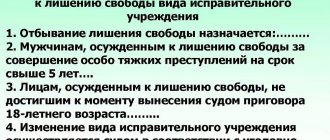Article 250 of the Criminal Code of the Russian Federation contains basic concepts relating to pollution, clogging of water with consequences and provides for its own penalties. As you know, water is our life.
Water pollution is a global problem. Therefore, our modern legislation provides for an article that regulates the activities of people in naturally protected areas where there are drinking sources and large water reserves. Multi-channel free hotline Legal advice on criminal law. Every day from 9.00 to 21.00
Moscow and region: +7 (495) 662-44-36
St. Petersburg: +7 (812) 449-43-40
Article 250 – water pollution
Water pollution is one of the most common criminal offenses. Let's look at brief and complete information on Article 250.
Persons who committed a criminal act under Art. 250 of the Criminal Code of the Russian Federation, bear the following punishment, imposed by the court depending on the severity and existence of certain circumstances:
- Imprisoned for three months or up to five years.
- Subject to a fine in the amount of 70 thousand to 200 thousand rubles.
- Perform correctional, compulsory and other work for a period of 360 hours to 5 years.
Persons bear criminal liability. The penalty depends on the decision made by the court.
Due to pollution, clogging, depletion of water on earth or underground, sources for drinking or other modification of the composition of water, which entailed causing significant damage to animals or plants, fish, forests or agricultural enterprises, legal entities and individuals bear appropriate punishment.
Legal entities and individuals pay a fine of up to seventy thousand rubles or one salary or other earnings of the guilty person for six months or are deprived of authority to occupy specific positions. Convicts also do not have the right to work in a specific area for several years. The perpetrators are assigned to compulsory community service for a period of up to 360 hours or other work for up to 1 year, or arrested for 3 months.
In addition, actions that caused harm to a person, plant or animal, regardless of whether they were done in a protected area or park, in an area where an emergency situation (ES) occurred, lead to the following consequences:
- persons receive a fine of up to 210 thousand rubles or pay it with one month of their salary or other income for a period of one and a half years;
- persons can undergo special work for up to 480 hours, general compulsory work for up to 2 years;
- guilty persons may also be imprisoned for 2 years;
- criminals are forced to undergo correctional labor.
If a person’s actions have resulted, in addition to harming protected plants, wild animals and the environment, in the death of one or more persons, he is sentenced to 5 years of arrest. In addition, forced labor for the same terms is provided for this offense.
AZ-libr.ru
Article 250. Water pollution1. Pollution, clogging, depletion of surface or ground water, sources of drinking water supply, or other changes in their natural properties, if these acts entailed causing significant harm to the animal or plant world, fish stocks, forestry or agriculture,
- shall be punishable by a fine in the amount of up to eighty thousand rubles, or in the amount of the wages or other income of the convicted person for a period of up to six months, or by deprivation of the right to hold certain positions or engage in certain activities for a term of up to five years, or by corrective labor for a term of up to one year, or arrest for up to three months.
2. The same acts that resulted in harm to human health or mass death of animals, as well as those committed on the territory of a reserve or wildlife sanctuary or in an environmental disaster zone or in an environmental emergency zone,
- shall be punishable by a fine in the amount of up to two hundred thousand rubles, or in the amount of the wages or other income of the convicted person for a period of up to eighteen months, or by correctional labor for a term of one to two years, or by imprisonment for a term of up to two years.
3. Acts provided for in parts one or two of this article, resulting in the death of a person through negligence,
- punishable by imprisonment for a term of up to five years.
Comm. Dubovik O.L.
1. General characteristics
Article 250 of the Criminal Code of the Russian Federation. The article contains:
a) the main elements of the crime with alternative signs on the objective side and the nature of the criminal consequences (Part 1); this composition is material, since in all cases it requires the infliction of significant harm;
b) material qualified personnel of the first degree of increased public danger on alternative grounds of the content (severity) of the harm caused or on alternative grounds, the place where the act was committed (Part 2);
c) material qualified personnel of the second degree of increased public danger (Part 3).
The article provides for crimes of minor (parts 1 and 2) and medium (part 3) gravity.
2. Relationship with other criminal law prohibitions.
Article 250 of the Criminal Code of the Russian Federation can, under certain circumstances, compete with Articles 246-248 and many other articles of the Criminal Code. Thus, the problem of distinguishing between this article and Article 281 “Sabotage” of the Criminal Code of the Russian Federation may even arise in the event of damage to sources of drinking water supply, which are objects of life support for the population. Another example: water pollution of one of the northern rivers of Russia due to the discharge of mercury-containing compounds into wastewater by a pulp and paper mill. Here, it is very likely that Article 247 of the Criminal Code of the Russian Federation will be applied, which establishes increased criminal liability in case of violation of the rules for handling environmentally hazardous substances and waste compared to Article 250 of the Criminal Code of the Russian Federation. Article 250 is general in relation to all possible criminal attacks on waters and sources of drinking water supply. The presence of special signs, for example, the objective side of such an encroachment, may lead to the application of another article in which these signs are indicated. However, Article 250 covers the widest range of possible attacks on waters and, accordingly, contains the widest range of criminal law prohibitions in relation to the environmentally significant use of waters.
3. Objectives and scope of this article.
The purpose of the article is the criminal legal protection of water by ensuring the order of water use by the widest range of water users who use water bodies for industrial, agricultural, consumer and any other needs. The legislator in this case places the state of the waters in the center of his attention, maintaining a possible optimum of this state and declares changes in the natural properties of water criminal, regardless of what actions (inactions) these changes were caused by. At the same time, the legislator very broadly characterizes the type of change, formally and essentially using an open list of changes. The scope of this article is correspondingly broad. It can be used in any sector of the national economy, in domestic water use processes. Moreover, this article applies to the behavior of individuals using water sources (facilities) for recreational and other similar purposes.
3. Problem situations.
As problematic situations of criminal legal assessment, and then the application of Article 250 of the Criminal Code of the Russian Federation, we can highlight:
a) facts of violation of the operation of water intakes, in particular the draw-up of substandard natural waters;
b) penetration of pollutants from waste storage ponds and filtration fields into groundwater;
c) illegal discharges of pollutants into water sources;
d) illegal use of water sources for washing equipment or for other purposes;
e) illegal operation of water supply structures and networks;
f) vandalistic behavior of individuals in relation to water sources on vacation, during tourist or sporting events, etc.;
g) illegal construction of dachas, residential buildings, and other objects that cause water pollution and associated significant harm to water bodies, etc.
4. Subject of the crime.
These are surface or underground waters, as well as sources of drinking water supply. But the legislator connects an encroachment on this main subject with harm to a mandatory additional subject, referring to it the animal or plant world, fish stocks, forestry or agriculture, as well as human life and health.
When formulating the provisions of Article 250 of the Criminal Code of the Russian Federation, the legislator does not distinguish between water sources as a water resource and waters as means of communication that ensure the functioning of water transport and the use of ships. However, this clearly refers to surface or underground waters, sources of drinking water supply, although they are revealed as artificial structures, but do not represent a technical storage of water, in particular tanks, other reservoirs of this nature, already included in the direct technical or consumer use of the allocated (withdrawn) volume of water .
When determining the subject of a criminal offense, taking into account the provisions on the retroactive effect of the criminal law in relation to acts committed before the entry into force of the Water Code of 2006, i.e. before January 1, 2007, but not completed by the proceedings, not ended with a court verdict that has entered into legal force, the legal regulation under the Water Code of 1995 should be taken into account. According to his instructions:
a) surface waters
According to the articles of the Water Code of the Russian Federation, water bodies are the permanent or temporary concentration of water on the surface of the land in the forms of its relief, which has boundaries, volume and features of the water regime, and underground (according to Art., the Water Code of the Russian Federation) are waters, including mineral waters located in underground water bodies, which refers to the concentration of hydraulically connected water in rocks, which has boundaries, volume and features of the water regime, i.e. aquifers, groundwater basins, groundwater deposits and their natural outlets;
b) source of drinking water supply
- this is a water body or part of it that contains water that meets established sanitary requirements and is used or can be used to collect drinking water in a drinking water supply system with various technologies for its treatment (see also the commentary to Article , , , VK of the Russian Federation).
The Water Code of 2006, as already noted, changed these definitions (see commentary to Art.,).
5. Objective side
The main elements of the crime include:
a) actions or inaction consisting of pollution, clogging, depletion, or other changes in the natural properties of waters;
b) criminal consequences; c) causal relationship between the act and the consequences.
The main difficulties are associated with the fact that in the objective side of water pollution there is actually no characterization of actions (inaction), but two groups of criminal consequences are indicated, localized by natural objects (two - the main and mandatory additional objects of encroachment) and sequentially connected to each other. Apparently, it was meant that pollution, clogging and depletion of water are actions, not results.
But it is precisely this approach that makes it necessary to turn to related normative legal acts that regulate the content of these actions, the distinction between these actions and their results.
6. Signs of the act.
The action is expressed in:
a) pollution
water bodies, i.e. discharge of production and consumption waste into water bodies and burial therein, including decommissioned ships and other floating vessels (their parts and mechanisms);
b) water depletion
, i.e. in the constant reduction of reserves and deterioration of the quality of surface and ground waters;
c) other changes in the natural properties of waters
, these are actions consisting of a negative change in the biological diversity of waters, their physical properties, for example, electromagnetic, thermal, therapeutic, radiation, etc. by carrying out blasting, construction and other work directly on water bodies, the bottom of water bodies or near them (in water protection zones).
Inaction may be expressed in the failure to install water regulating devices and water accounting devices during the construction of water intake and other hydraulic structures, failure to take mandatory measures to prepare reservoir beds for flooding, failure to remove toxic substances from wastewater before discharging them into water bodies, etc.
7. Consequences.
They must be localized by additional subject, i.e. for significant damage caused to flora and fauna, fish stocks, forestry or agriculture (parts 1 and 2). The specified harm can be defined by content as the occurrence of diseases or death of aquatic animals and plants, other animals (near-aquatic and other) and vegetation on the banks of water bodies, a decrease in fish stocks, a change in the structure of fish stocks (a decrease in the number of valuable fish species, the introduction of harmful or unproductive species), destruction of spawning and feeding grounds, passage routes for spawning, destruction of wintering pits, etc., disease or death of forests, decreased productivity and land degradation, the emergence of wetlands or saline lands, high costs for reclamation, fertilization, cleaning , shores and bottom of water bodies, etc.
The damage caused is calculated according to the relevant taxes and standards, taking into account the costs of stocking water bodies and others with fish (see commentary to Article 69 of the RF CC).
The assessment of the severity of the consequences for forestry and agriculture is carried out by the court on the basis of relevant regulations, taxes and taking into account the specific circumstances of the case, primarily real damage, expressed in the death of agricultural crops as a result of watering them with contaminated waters, as well as in the cost and volume of expenses for restoration work and elimination of consequences of lost profits.
At the same time, one should still take into account “delayed harm,” when, for example, a change in the natural properties of water changes the stable parameters of the existence of populations and causes their extinction.
8. Causal connection between the act and the consequences.
Within the meaning of this article, it consists of two stages and consists in the fact that the act should lead to a change in the natural properties of water, and a change in the natural properties of water with its new characteristics (properties), for example, an increased content of mechanical impurities, dissolved harmful chemicals or a decrease in physical volume water in a given water body, etc., causes a change in the state of other objects protected by criminal law - animal health, the ability to extract moisture from the root system of plants, etc.
There is no causal relationship if, when surface waters are depleted or polluted, animal populations or fish stocks still die as a result of an epizootic that arose for other reasons.
9. Subjective side
a crime is expressed in the form of indirect intent, when a person realizes the social danger of the act he commits as violating the prohibition established by criminal and environmental legislation on pollution, clogging of water or prohibitions on exceeding the intake/withdrawal of water resources, volumes or qualitative composition of substances and wastes discharged into waters and so on.; allows the occurrence of these consequences or is indifferent to their occurrence. Qualified offenses under Part 3 are characterized by a double form of guilt, since negligence is provided in relation to the consequence in the form of the death of a person.
10. Subject of the crime
- a person who has reached the age of 16.
11. Qualified compositions of water pollution.
The article contains characteristics of two groups of such compounds.
The first group includes several signs. Causing harm to human health. The harm must arise from the use of water with altered natural properties; Moreover, such an opportunity for the subject must be covered by at least indirect intent. The problem is the lower and upper limits of harm. The occurrence of various types of blisters, irritation and redness of the skin, and temporary stomach upset, formally speaking, are harmful to human health. Here it is necessary to proceed from general provisions on public danger. The upper limit in this case also covers the intentional infliction of moderate harm to health without qualifying signs (Part 1 of Article 112 of the Criminal Code of the Russian Federation).
Mass death of animals.
In this case, the problem is related to the interpretation of the concept “animals”, which, however, is not particularly difficult. As in other cases, animals include all representatives of aquatic animals and semi-aquatic animals, which is fully justified by reference to the distinction between flora and fauna in Part 1 of Article 250 of the Criminal Code of the Russian Federation.
The location of the crime.
The act must be committed and the consequences must occur on the territory of a reserve or wildlife sanctuary, or in an environmental disaster zone or in an environmental emergency zone. In this case, the consequences of the main composition of water pollution are sufficient, i.e. provided for in Part 1 of Article 250 of the Criminal Code of the Russian Federation (substantial harm to flora or fauna, fish stocks, forestry or agriculture).
Second group
qualifying features is reduced to causing the death of a person through negligence. Of course, it covers the same causing of death to many linden trees, since the legislator did not specifically highlight this characteristic at first and did not introduce it during the 2003 reform. In fact, it is quite difficult to imagine carelessly causing the death of a person due to water pollution. Severe poisoning is possible when drinking water. The causal relationship is complex and controversial when water pollution leads to the poisoning of fish, which becomes unfit for consumption, and then, if it is still consumed, to the death of the person who ate the fish. In this regard, analyzing the actual existence of a causal relationship between pollution and death or between an act that caused significant harm, for example, to the animal world (in the form of an individual animal or several individuals) and causing death by negligence is not an easy task.
See also:
Commentary on the Criminal Code of the Russian Federation
/ Rep. ed. V.M. Lebedev. — 3rd ed., add. and corr. - M.: Yurait-Izdat, 2004. - 917 p. — (Professional comments). ISBN 5-94879-176-9
Commentary to Art. 250 of the Criminal Code of the Russian Federation
Comments on the article are necessary to clarify the circumstances of guilt and establish the qualifications of the offense, as well as the type of crime.
The object of the crime includes water that is on the ground and under it, drinking water bodies. Surface waters include those that are all or part of the time on the ground. Underground - those that are located underground (mineralized ones are also included). Drinking reservoirs - objects containing water used by the population for drinking.
Pollution is understood as the dumping or otherwise entering a body of water or other object of various biological and chemical substances. Because of it, the composition of water deteriorates, which has a bad effect on the growth and life of plants, animals, birds and the life of people.
Such actions contribute to limiting water use. Littering is the discharge or influx of various unnecessary things into waters and other objects, which spoil the general condition and make it difficult to use water objects. Water depletion consists of a steady decrease in reserves and a deterioration in the properties of surface and underground waters. Other modifications of reservoirs and other objects, which are manifested in a change in their biological composition or a modification of the initial composition.
Manifests itself in the use of industrial, economic and other facilities with damaged cleaning devices, the liquidation of cleaning devices, non-compliance with standards for transportation, storage, use of substances, the commission of acts that resulted in clogging of sources and caused damage to the zoological or plant world, fish, forest or agricultural farm. All stated points are regulated by Art. 250 CC.
Significant harm comes from the consequences of the offense in question. These include the appearance of diseases or death of animals and plants, the destruction of fish, and places of rest. At the same time, the level of death exceeds the average by several times, the area is damaged or lost, and individuals are destroyed. The radioactive background changes to such an extent that there is a real threat to human life. The actions taken in the field of water pollution must have a direct investigative relationship, the method of committing the offense.
The offense ends when specific harm occurs. A crime can be committed both in the form of direct intent and through negligence. The subject of the offense is a person over 16 years of age.
Qualifying characteristics that are prescribed in the second part of Art. 250 UK:
- causing harm to a place, animals or fish, for example, death under Art. 246;
- causing harm on the site of the reserve, specified in Articles 247 and 262.
Thus, for a crime to arise, it is necessary to indicate qualifying characteristics, to have an object, a subject and a subject.
Commentary to Art. 250 Criminal Code
1. The objective side includes the following acts: a) pollution; b) clogging; c) depletion of surface or ground water or sources of drinking water supply; d) other change in their natural properties. A mandatory feature is a consequence in the form of causing significant harm.
2. Significant harm to flora or fauna, fish stocks, forestry or agriculture is an evaluative concept. It is necessary to take into account the number of dead aquatic animals, other animals, vegetation, forest trees, agricultural products, the ecological significance of the reservoir, the cost of lost or damaged in monetary terms, etc.
3. Reserves (Part 2) are environmental, research and environmental educational institutions aimed at preserving and studying the natural course of natural processes and phenomena, the genetic fund of flora and fauna, individual species and communities of plants and animals, typical and unique ecological systems.
Sanctuaries are territories (water areas) that are of particular importance for the preservation or restoration of natural complexes or their components and maintaining the ecological balance.
Consultations and comments from lawyers under Art. 250 of the Criminal Code of the Russian Federation
Consultations and comments from lawyers are necessary in order to determine the elements of a crime, understand a complex case and identify the perpetrators.
The components of the offense under the article include:
- An object. This includes the population, its health and livelihoods.
- Objective side. This includes water pollution and the consequences that have arisen due to this.
- Subject. A person is recognized as having legal capacity from the age of 16.
- Subjective side. This includes actions committed with direct intent and negligence.
The qualified composition in the presented article is the infliction of specific actions that led to harm to people or animals, which were carried out in a protected area where a certain emergency occurred.
The following laws are used to determine the degree of guilt of a person:
- Federal Law (Federal Law) “On Environmental Protection” (Articles 4, 16, 40, 42);
- Federal Law “On the sanitary and epidemiological welfare of the population” (Articles 10, 11, 18);
- RF CC (Articles 5, 7, 11, 42-62, 65-67);
- SanPiN 2.1.5.980-00 2.1.5;
- SP 2.1.5.1059-01.
From legal practice, the most common are Federal laws and Article 250 of the Criminal Code.
Environmental legislation
Our most important law – the Constitution – states that every Russian can count on decent environmental conditions. But it can and does count – different cases. In the environmental field, the stakes are so high that one misdeed can have catastrophic consequences. Therefore, much attention is paid to environmental protection.
The basic rules for the protection of natural resources, including water, are contained in the Law on Environmental Protection. It specifies the general conditions that must be observed if a source of negative impact on nature arises. And it doesn’t matter whether it directly or indirectly causes damage to the environment.
For example, during the construction and operation of buildings, buildings or production facilities, measures for nature protection, rational water use and resource renewal must also be carried out. If environmental safety requirements are not met, the operation or construction of facilities may be completely stopped by a court decision.
Water protection issues are also determined by the Water Code. There are Hygienic requirements for the protection of surface waters and other legislative acts.
In case of violation of environmental legislation, the damage caused to nature is compensated. Depending on the circumstances - voluntarily or by court. Claims on environmental issues are heard by courts of general jurisdiction.
Qualifying concepts
Let's consider what lies under some of the terms from Art. 250 of the Criminal Code of the Russian Federation. Everything will become clear with the comments.
What waters fall under Article 250 of the Criminal Code of the Russian Federation? We are talking about surface, groundwater and sources of drinking water supply. All these waters are of ecological importance. This is the water of lakes, canals, rivers, etc. This does not include the waters of inland seas and territorial waters of Russia - they are considered separately in the Criminal Code of the Russian Federation (Article 252).
Swimming pools, technical wells and settling tanks are not included in the list. Although they are considered water storage facilities, they have no ecological significance.
Pollution is considered to be the discharge of substances that reduce the quality of water or have a detrimental effect on the shores or bottom. And depletion refers to a reduction in reserves and deterioration in water quality. The type of source of harm does not matter. It can be household, industrial, agricultural, etc. The type of pollutant is also unimportant. Garbage, petroleum products, and wastewater - everything is considered.
Whether the harm is considered significant is decided individually in each case. Based on the circumstances of the case. The scale of harm will be taken into account. How many coastal plantings have died, how many fish have died out. Was the source potable? Has water pollution occurred on the territory of the reserve? And it is important that the connection between water pollution and consequences be proven.
What is considered significant damage:
- diseases and mass deaths of animals living in water;
- extinction of vegetation on the banks;
- pestilence of fish;
- destruction of spawning sites;
- increased radioactive background, etc.
How is damage assessed?
Regardless of whether the culprit compensates the damage of his own free will or by a court decision, the amount of damage is assessed the same. There are special methods and reimbursement rates for this.
For example, the Russian Ministry of Nature has developed a methodology for calculating the amount of damage caused to water bodies due to violation of water legislation. It is used for water pollution that leads to the degradation of natural ecosystems and their depletion. Where the methodology is not applicable, the amount of damage subject to compensation is calculated based on the actual costs of restoration. Losses and the cost of restoration projects are also taken into account.




